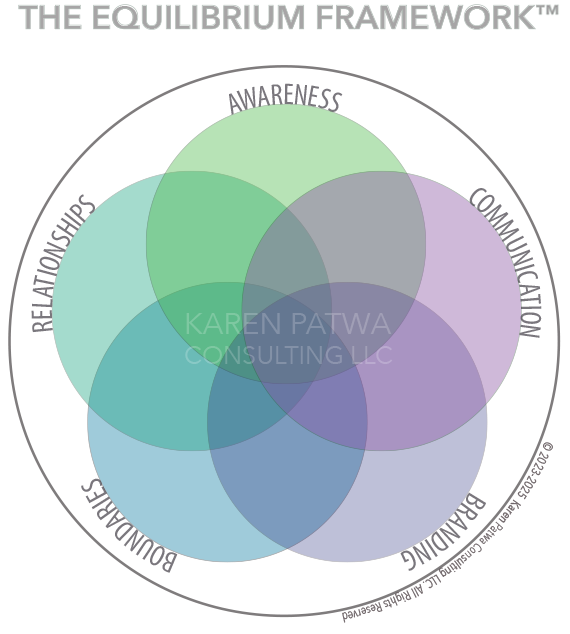THE EQUILIBRIUM FRAMEWORK™
We are told to “lead authentically,” but never told how to do so while facing bias, toxicity, and isolation. The unique challenges we face can include (but are not limited to):
- nitpicking and micromanagement
- unrealistic workloads
- aggressions and microaggressions
- scapegoating and sabotage
- unstable/unsupportive Boards
- being pushed out/forced exits
I built the Equilibrium Framework™ transform the way we leverage leadership competencies, so we can lead effectively, retain our integrity, and position ourselves to advance in our organizations and industries.
There is mounting research on observed patterns in the experiences of women of color leaders, (McKinsey Report on Intersectional Experiences). Following traditional leadership guidance, originally created for men, can potentially harm us.
We need to redesign leadership development for women of diverse identities.
We can find create peace in our professional life by being strategic in our leadership.

The customized use of this framework has helped women leaders at senior and executive levels to:
- Go from being unrecognized and unrewarded to securing recognition, compensation, and resources
- Go from being undermined. micromanaged, and overworked to claiming your power, agency, and peace
- Go from being a victim of isolation and shock to being in a place of knowing and preparedness
- Navigate landmines and power plays to bring about transformational change
- Increase your influence in your organization without sacrificing your integrity and humanity
- Create opportunities for advancement while protecting your current positioning
We look at five competency areas, which I have found to be the most under-leveraged by leaders with unique and/or intersectional identities:
Awareness: Increase awareness of your environment and common patterns of behavior, so you can be prepared rather than surprised. Awareness helps us make better decisions.
Relationships: Form, maintain, and leverage the right relationships at the right time to achieve common goals and support transformational growth, not just for those you serve, but also for yourself.
Communication: Effectively utilize communication tools at your disposal to empower yourself, document information and events, and create new opportunities for collaboration, transformation, and advancement.
Boundaries: Identify internal and external barriers to setting boundaries. Find the best ways to say “no” (or “yes,” depending on the situation). Employ boundaries strategically to address bias, avoid being overworked and overwhelmed.
Branding: Examine your leadership values, identity, and brand. Clients have often refined these as they move through the program. Leverage your brand to strengthen relationships and access new opportunities.

